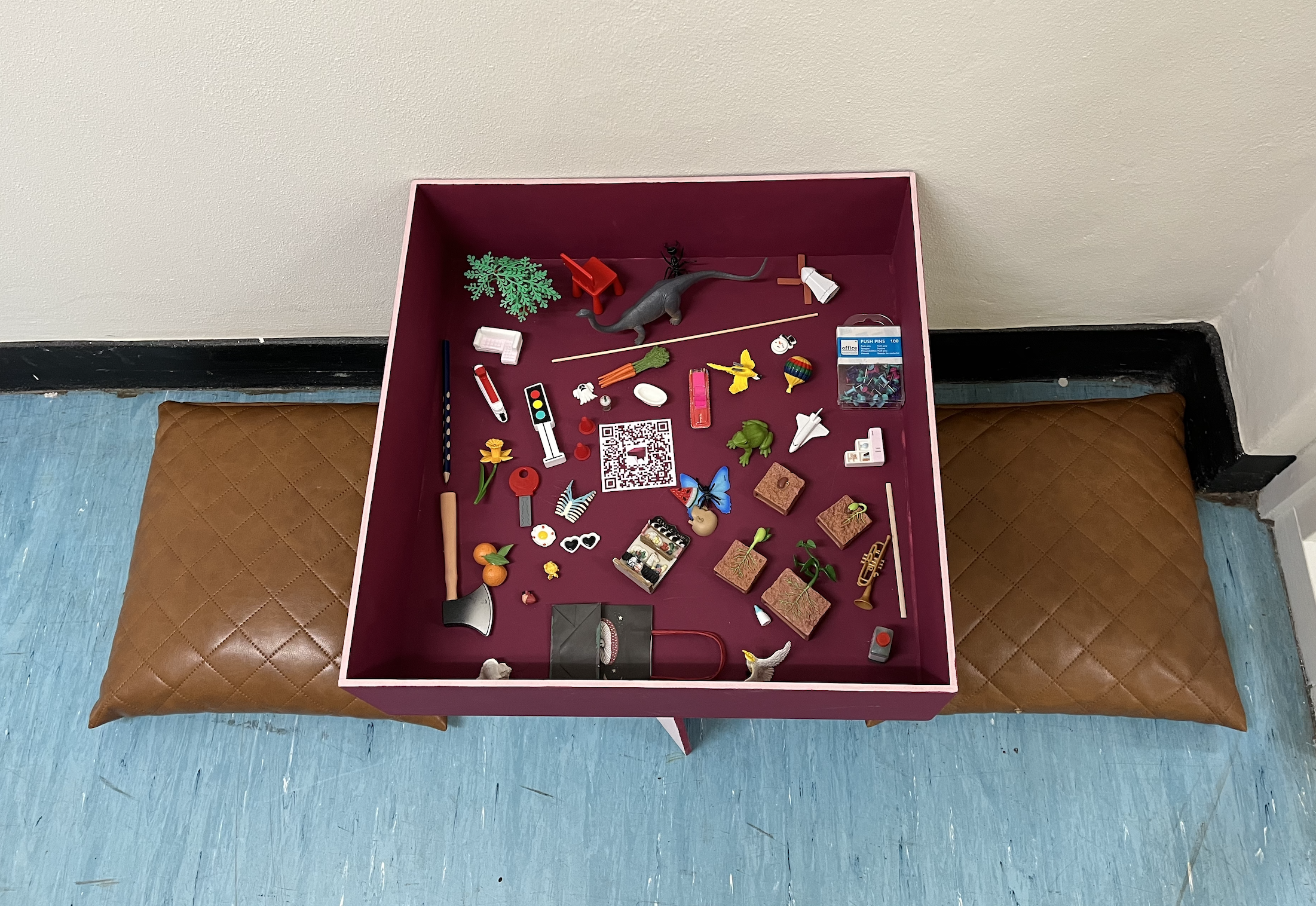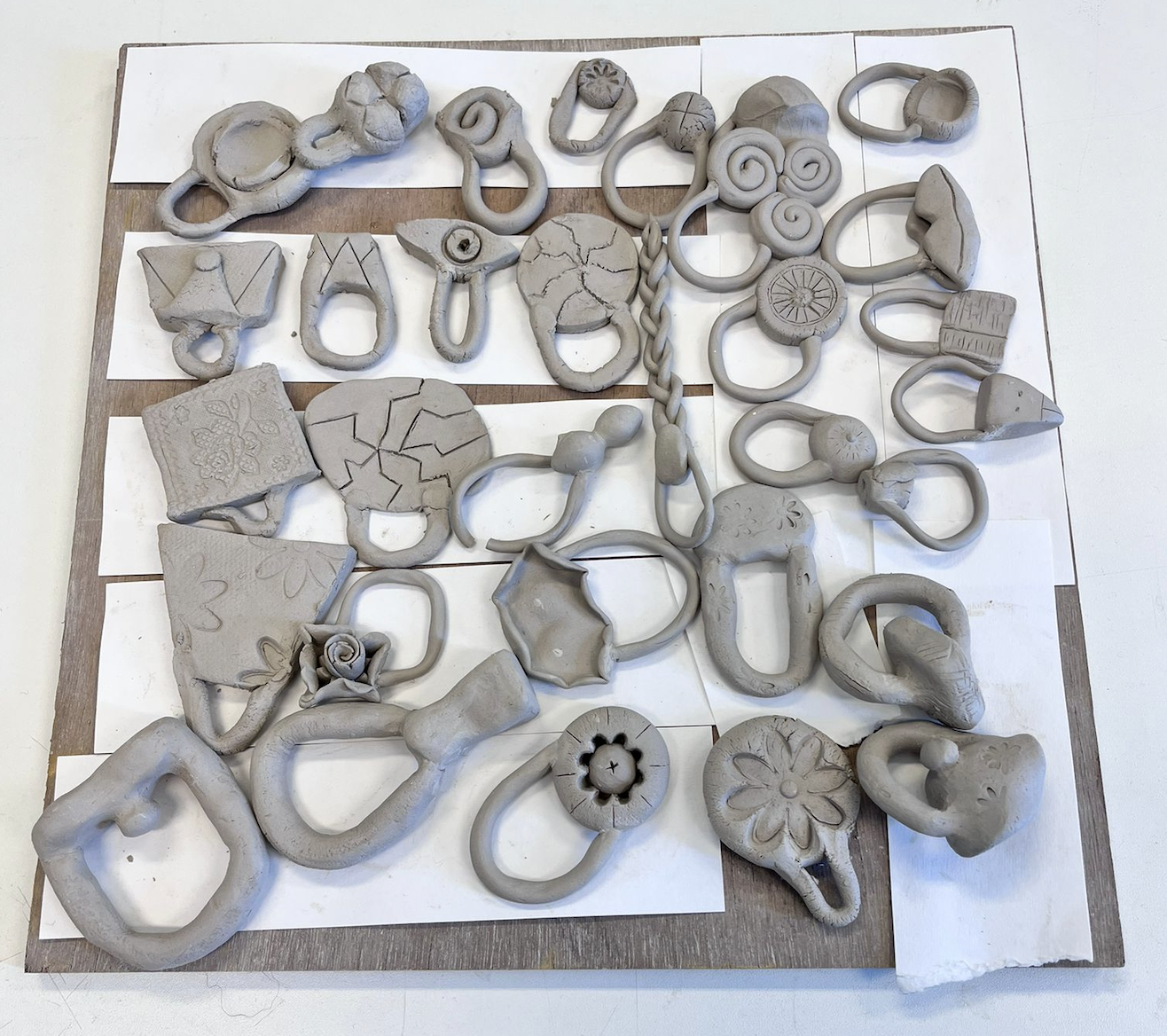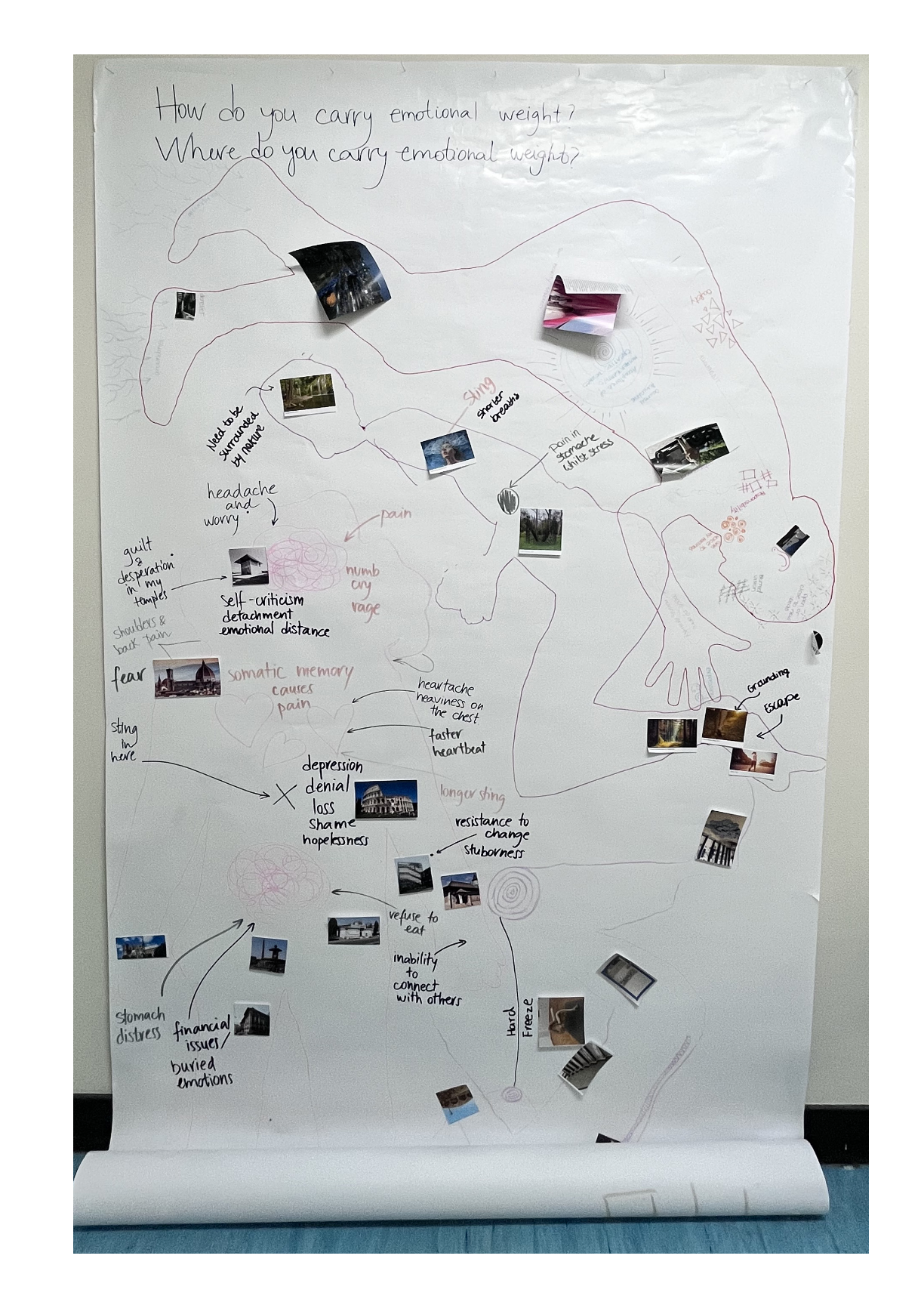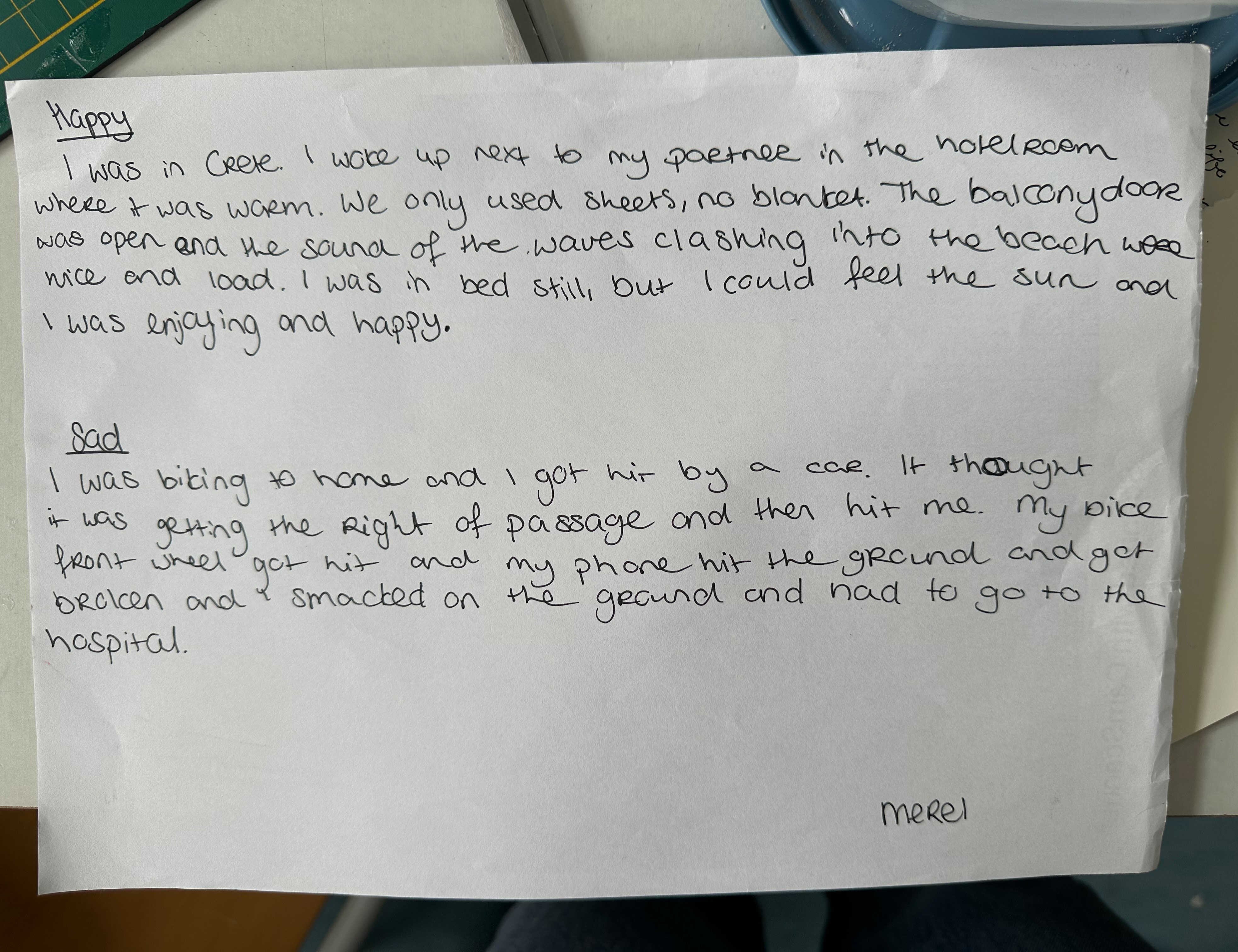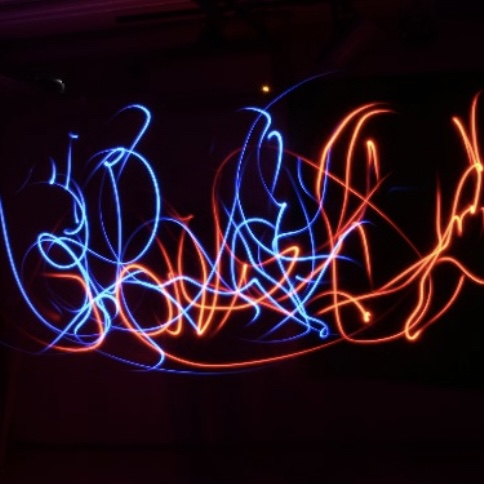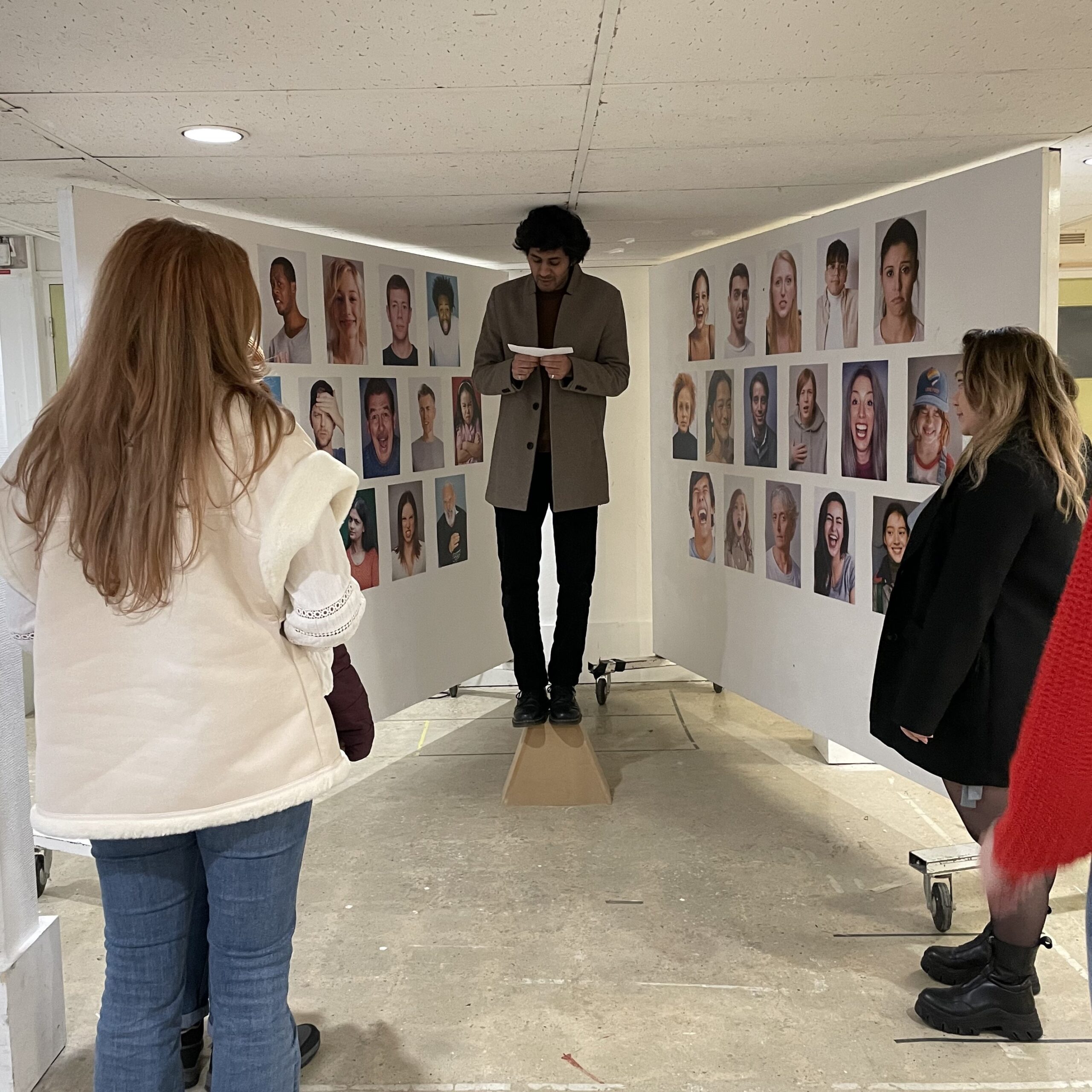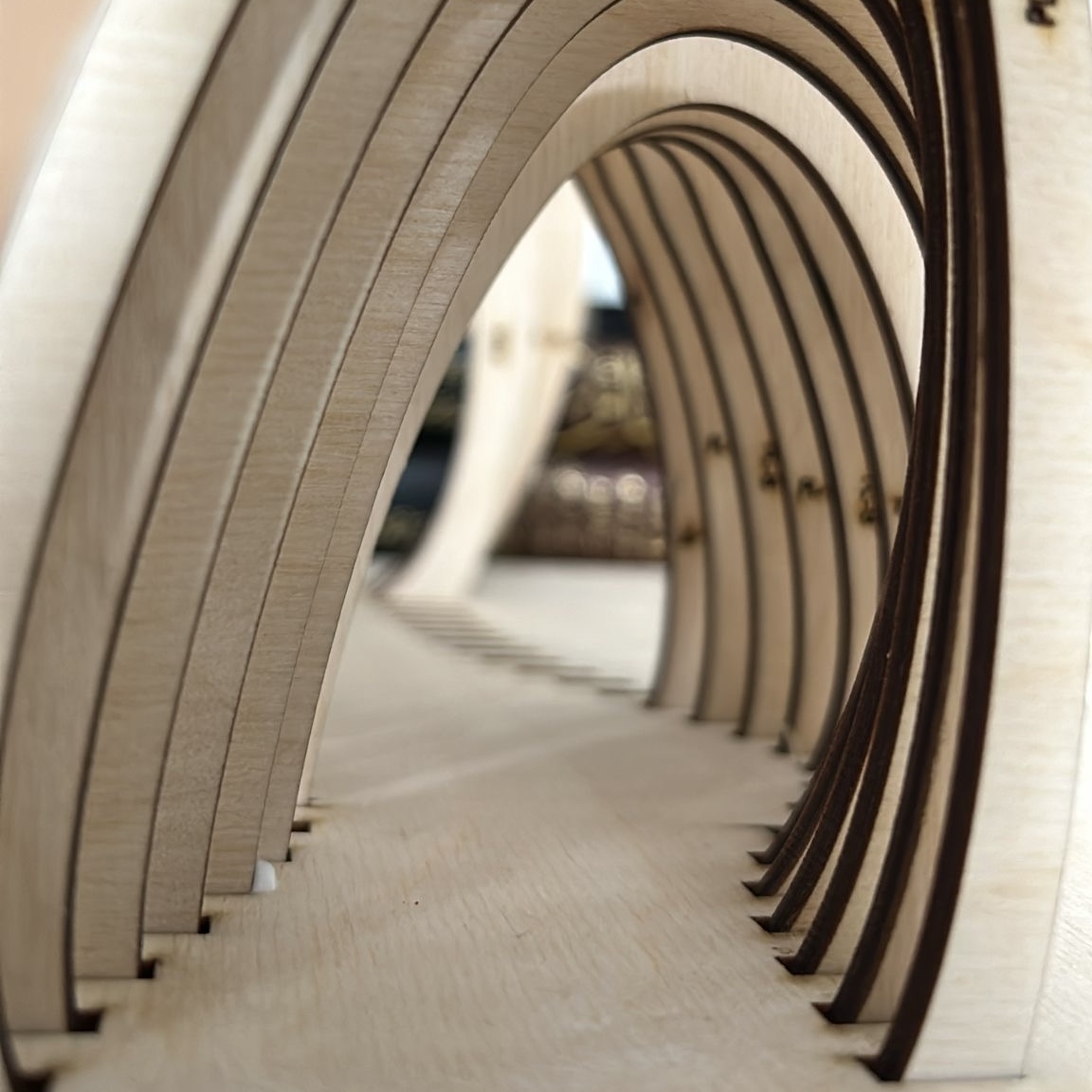EMBODIED RESEARCH
“Our possessions are a major contributor
to and reflection of our identities”
Belk, Russell W. “Possessions and the Extended Self.” Journal of Consumer Research 15, no. 2 (1988): 139–68. http://www.jstor.org/stable/2489522.
Our project started with the point of power that has come with devices. Devices, especially phones, have a lot of power over us. In general, when we get a notification we feel pressure to answer as soon as possible. Devices nowadays distract us often from the real world and have an impact on our physical state as well. There needs to be a healthy balance that we can create among other things like our own awareness.
We began our investigation by questioning how we could exteri- orize or perhaps objectify the concept of Balance. Finding mental and physical balance is a quest very much pertinent to our human life, even more so in the times we live now. Is it possible to find balance in something external to us? Or is Balance something we feel within and thus can only find within? Does what we wear have any impact on how we feel?
– ‘Our fragile sense of self needs support, and this we get by having and possessing things because, to a large degree, we are what we have and possess.’ (Belk, W. B., 1988, p. 139)
– We wear objects in the hope of enhancing ourselves.
– We would equate ourselves to nothing if we possessed nothing (no clothes, no place to sleep, no objects), because we define ourselves according to the things we have and achieved in life.
Balance
Balance in life? Balance in our bodies? What is it to feel in balance?
We wanted to explore and experiment with objects on our bo- dies to understand their power upon us.
Are we our bodies?
We certainly carry a body around, adorn it and call it ourselves.
A question we would like to explore in this experimentation is:
As we search the world outside ourselves for feelings and reassu- rances that we can only experience inside, can an object, placed on our bodies, provide these feelings? Or is it a search in vain and all these objects will end up pointing us to a different direction?
Our brainstorm session made clear what we wanted to focus on for the start of this project. We started from balances and expanded our ideas into communicating this through garments
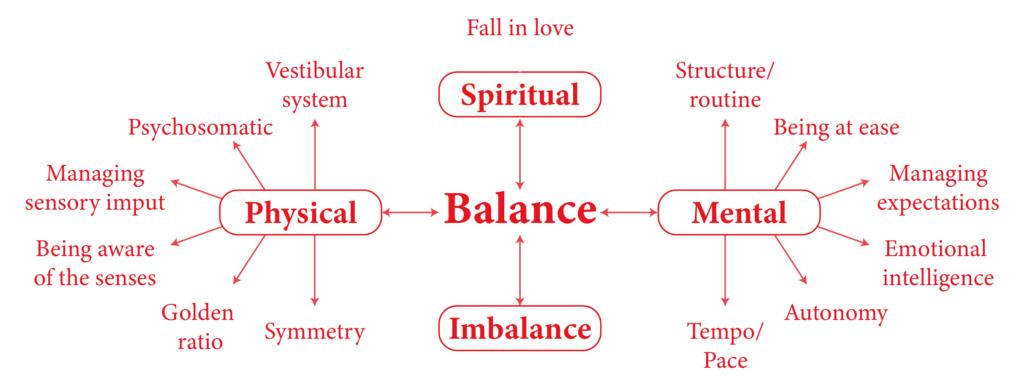
BALANCE HAT
The hat is made of two crossing rods, forming the shape of a sym-metrical cross, connected with an oval support for the head. The Balance Hat sits on the head on its own with a cushion within the borders. It is made with plywood, it weighs approximately 600gr, and it is 70cm across on both sides.
The concept behind the hat is that it brings focus to the person wearing it. Our experience with it brought us to the conclusion that by having it on the head, the person is more focused on their personal surroundings and therefore on themselves. If worn for a long period it can cause some discomfort but as a by-product of long exposure, a better posture was noticeable even after the hat had been removed from the head.
PRO UP SHOULDERS
A backpack is carried on the back supported on the shoulders. Carrying things on our backs is as much an an- cient practice as carrying things on the head is, since it seems natural, observing the shape of our bodies, to use the strength of the back to car- ry things. But are there alternative ways to carry weight? Could we think of ways to carry weight on us that al- lows for the freedom of the hands?
We investigated an alternative way to carry weight on our shoul- ders by placing the weight on the front, with the weight more or less equally distributed on both sides. We concluded that the weight matters very little if the cushion carrying it is enough to make in comfortable on the shoulders. Carrying two equally divi- ded bags on the sides and in front of the body, allows for the free- dom of the hands and makes it practical to access what is being carried. The Pro Up Shoulders is made of a cushioned half circle shaped pillow that sits on the shoulders, on both sides, equally divided bags are attached to the cushion and carried in front of the body.
‘To carry the weight of the world on one’s shoulders’ is to feel much pressure because one has great responsibilities*. Back re- ferred to the beginning of our research we, in general, feel res- ponsible for ourself and our surroundings. We feel the power of our responsibilies in a mental and phisical way.
* Merriam-Webster.com Dictionary, s.v. “carry the weight of the world on one’s shoulders,” accessed January 2, 2023, https://www.merriam-webster.com/dictionary/carry%20the%20weight%20of%20the%20 world%20on%20one%27s%20shoulders.
SUPPORT BELT
We also experimented with a corset support belt, by sewing little bags across its surface, these bags are removable and changea- ble. Observing the strength of our waist, it is pity we don’t carry things more often on the waist! What we observed from experi- menting with the corset is that we felt supported on the waistline, not only freeing the arms from carrying weight but also making it at the right height to access what is being carried. By having it on the waist, the weights are therefore located near the hands.
WEIGHT SHOES
A Geta is a type of wooden sandal, traditionally from East Asian countries. They are worn since ancient times to keep feet and kimono from coming in contact with things on the ground, such as dirt, water, or snow. They change the way people walk and move through space, it not possible to run ef- ficiently while wearing Getas, but they serve a very practical purpose.
In our experimentation we explored wearing heavy wooden shoes, how it affected our perception of our bodies in the space, and asked: “does this have a power over me?”
Conclusion
We concluded that an object can cause mental and physical chan- ges in our bodies and also in our mental state. We relate oursel- ves and measure our personal value on the things that adorn and surround us. This is noticeable once we realise that our material possessions do have an impact on us and the way we imagine others to see ourselves. By experimenting with objects on our bodies, trying to find answers to some fundamental philosophical questions, we discovered that there is power intrinsic to an ob- ject and that an object holds power over us, if either our personal experiences as well as the experiences of others relate a meaning to the object.

